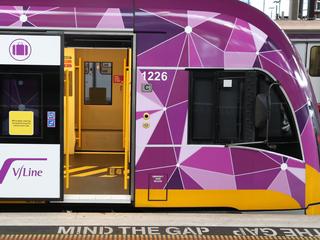The mid-year budget update will include millions of dollars to plug blowouts in Australia’s $125 billion road and rail pipeline, as Treasurer Jim Chalmers warns of severe constraints amid falling iron ore and coal prices.
Despite being just four months since the last federal budget, Infrastructure Minister Catherine King revealed states and territories were already asking for more cash to finish projects, which are plagued by higher materials costs and labour shortages.

“We will assess those on a case-by-case basis,” Ms King told The Australian Financial Review, adding that the veracity of state and territory cost increase claims would be tested.
An independent review of the infrastructure investment pipeline last year found a build-up of tens of billions of dollars of cost blowouts, and a 10-year plan that was impossible to deliver, prompting an overhaul of how the federal government delivers money.
NSW and WA last week joined all but Tasmania and the Northern Territory – which have had ministerial changes – in signing up to a new five-year funding deal with strict rules around spending and reporting.
“It really means state governments can’t incur huge cost increases on projects without really sharing some of that risk,” Ms King said. It adds to Labor policy of adopting a default funding split of 50:50 with major states, which last year sparked outrage from cash-strapped premiers.
Ms King also indicated a decision on Melbourne Airport’s controversial third runway would be made this month, while an interim airline ombudsman would be ready to take customer complaints from the first half of 2025.
Global economic uncertainty
Treasurer Jim Chalmers on Sunday revealed ongoing budget pressures from falling iron ore and coal prices and general volatility, particularly in China,would flow through to the mid-year economic and fiscal outlook (MYEFO).
“We’ve got pretty severe budget constraints,” he said.
“What we’ve seen in commodity markets this year is that iron ore and net coal have come off about 40 per cent. Oil has come off I think about 20 per cent, or just over that, since around April,” he said.
“When commodity prices weaken like they are now, that’s a real sign of the global economic uncertainty, the risk and volatility in the global economy. They impact on our own economy. We’re not immune from it, and they also flow through to our budget.”
Iron ore futures in Singapore were trading around $US92 a tonne late on Friday. ANZ economists warned China’s steel mills were battling weak margins and continued weakness in the country’s property sector, which “could put downward pressure on iron steel and iron ore prices”.
The May budget shows a faster than expected fall in the iron ore spot price to $US60 a tonne by September 30, instead of March 31, 2025, along with a fall in metallurgical coal prices, would wipe $4.5 billion from the budget.
But even if prices ease as expected by Treasury, the lack of the company tax bonus seen over the past several years from high commodity prices – which helped propel Labor to back-to-back surpluses – will disappear, exposing the long-term structural deficit that remains unrepaired.
Dr Chalmers will this month travel to China to meet his counterparts for a strategic economic dialogue. He will be the first treasurer to travel to Australia’s largest trading partner in seven years.
On domestic politics, he played down calls from within his own ranks to include dental in Medicare, a signature Greens policy, saying “there are way more good ideas than there is capacity to fund them”.
He also signalled log anticipated reforms to the aged care funding model could be introduced into the parliament as soon as this week after months of negotiations with the Coalition.
AFR


